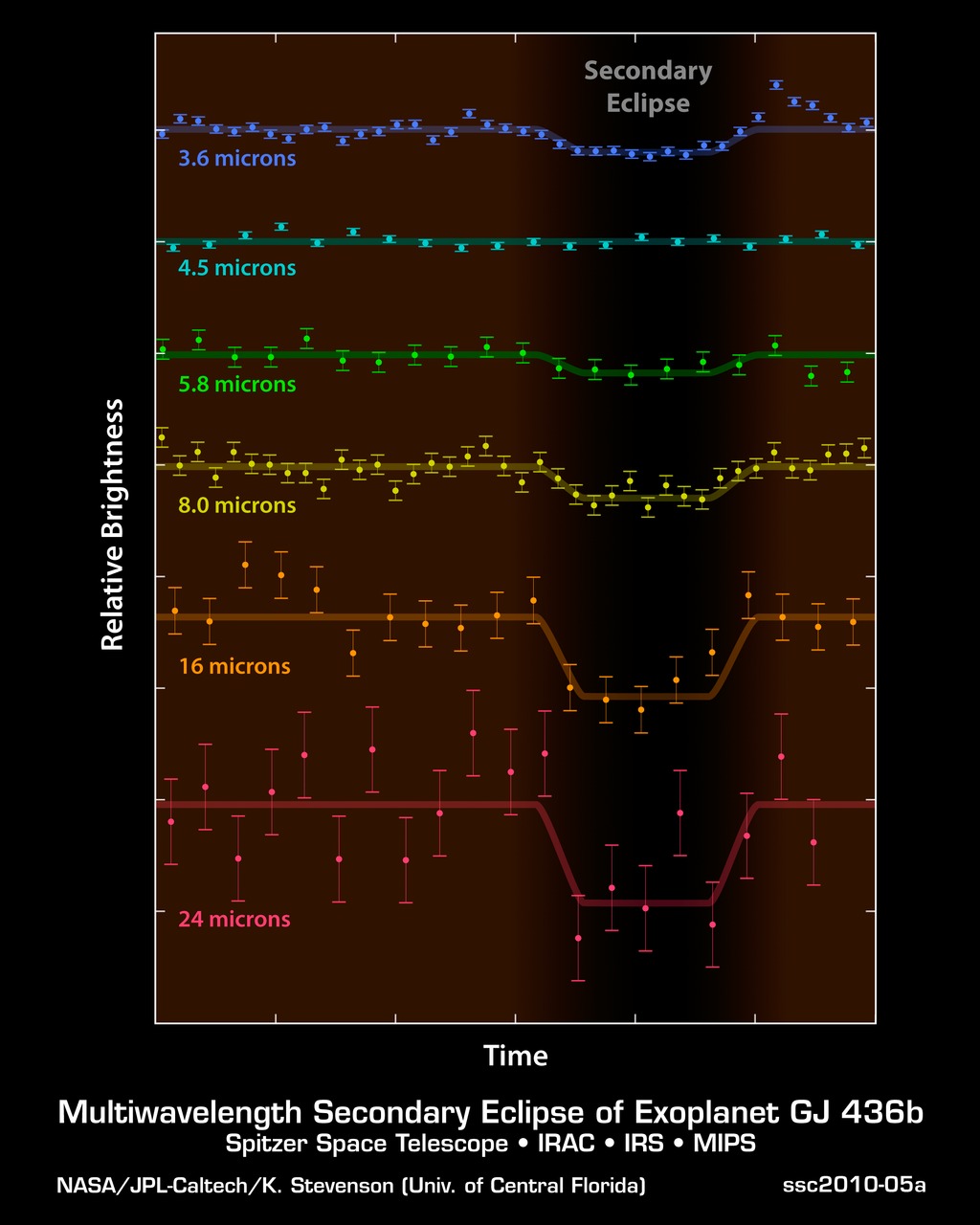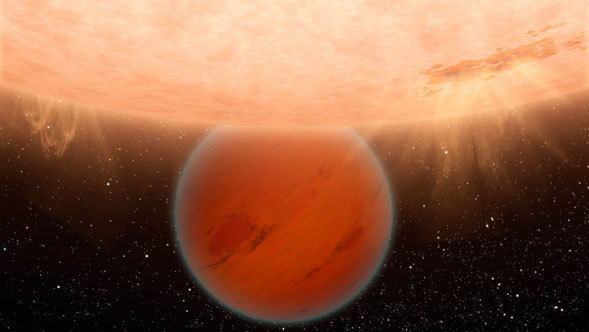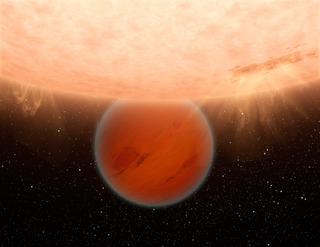
Credit: NASA/JPL-Caltech/K. Stevenson (Univ. of Central Florida)
Chart • April 21st, 2010 • ssc2010-05a
ssc2010-05a
These plots from NASA's Spitzer Space Telescope show light from a distant planet, GJ 436b, and its star, as measured at six different infrared wavelengths. Astronomers use telescopes like Spitzer to measure the direct light of distant worlds, called exoplanets, and learn more about chemicals in their atmospheres.
The technique involves measuring light from an exoplanet and its star before, during and after the planet circles behind the star. (The technique only works for those planets that happen to cross behind and in front of their stars as seen from our point of view on Earth.) When the planet disappears behind the star, the total light observed drops, as seen by the dips in these light curves. This same measurement is repeated at different wavelengths of light. In this graph, the different wavelengths are on the vertical axis, and time on the horizontal axis. Those dips in the total light tell astronomers exactly how much light is coming from the planet itself.
As the data demonstrate, the amount of light coming off a planet changes with different wavelengths. The differences are due to the temperature of a planet as well as its chemical makeup. In this case, astronomers were able to show that GJ 436b lacks the common planetary ingredient of methane.
About the Object
- Name
- GJ 436b
- Type
- Planet > Type > Gas Giant
- Planet > Special Cases > Transiting
- Planet > Special Cases > Hot Jupiter
- Distance
- 33 Light Years
Color Mapping
| Band | Wavelength | Telescope |
| Infrared | 3.6 µm | Spitzer IRAC |
| Infrared | 4.5 µm | Spitzer IRAC |
| Infrared | 5.8 µm | Spitzer IRAC |
| Infrared | 8.0 µm | Spitzer IRAC |
| Infrared | 16.0 µm | Spitzer IRS |
| Infrared | 24.0 µm | Spitzer MIPS |






